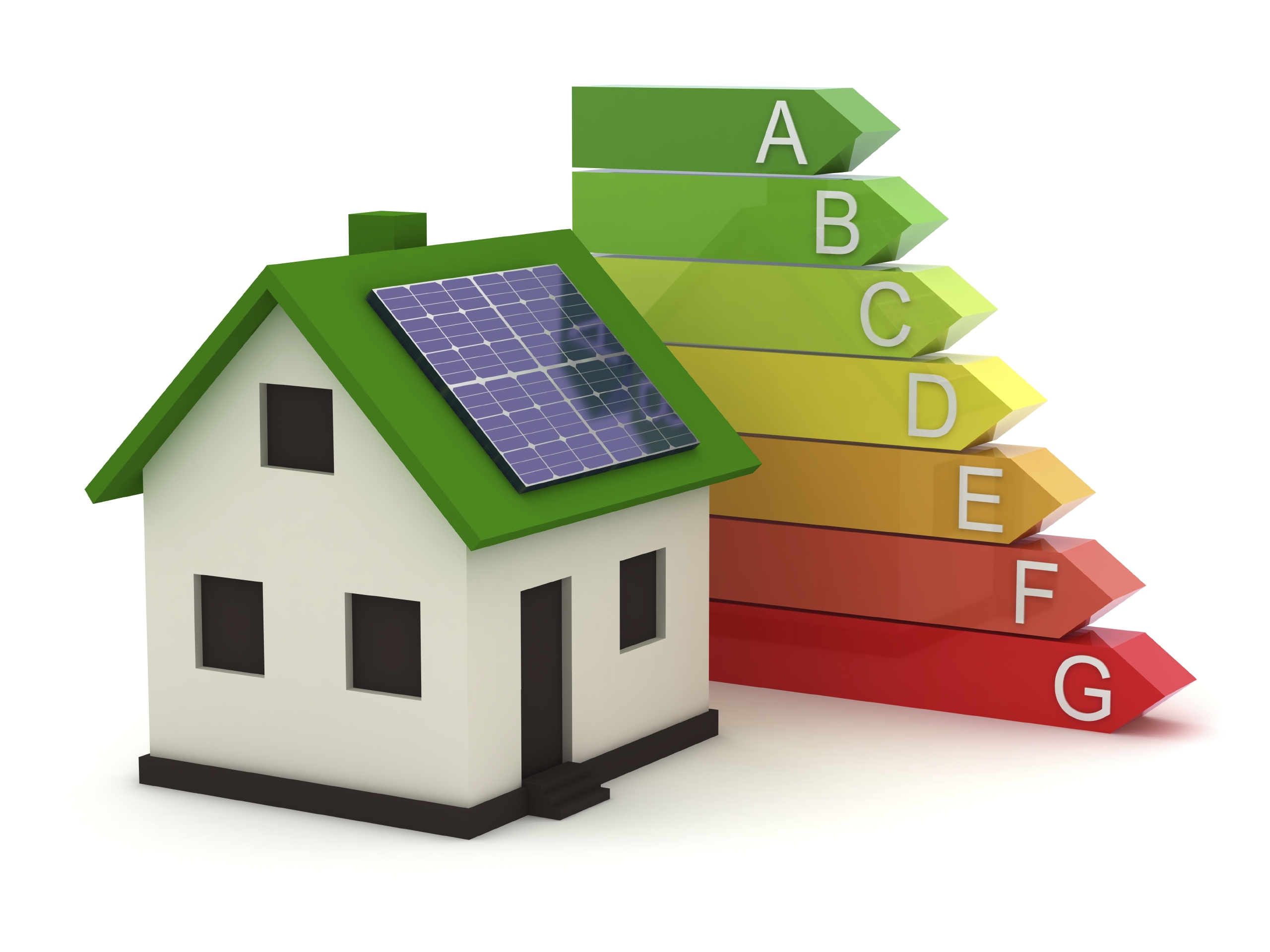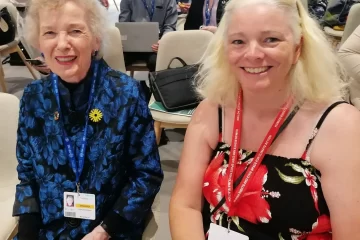Retrofitting rentals: where the housing and climate crises collide

13 August 2021
Aisling* loves where she lives. She has a spacious room with a big window. The neighbourhood is nice, too. She lives near friends, public transit and a vibrant community. Everything she needs is in walking distance.
“It’s a great spot,” she told The Green News.
But her room gets very cold in the winter. So cold that she can see her own breath. Even with the heater on, she wears layers upon layers: sweatpants, a jumper, socks and then a robe. Sometimes her room is colder than it is outside. This flips in the summer. On a hot day, her room is “like a sauna.”
While her landlord was fixing her heater, he told her that he looked into improving the house. Maybe replacing the windows would help. But after finding out that he would need to replace the insulation as well, he concluded, “it’s too expensive and too much work just for the tiny bump in the energy rating.”
Following that conversation, she realised that she might only be able to afford her current monthly rent because of the poor insulation and lack of energy efficiency.
Aisling thinks that her landlord might reconsider a retrofit if it would benefit him. But this could have irreversible effects.
“I just don’t see a world where my landlord takes that incentive and doesn’t raise prices,” she said.
“I know [retrofitting] is the right thing to do, but I also think realistically, if he were to do that, it would put me in a different situation, and I would have to find somewhere else to live,” she added.
Approximately one million homes in Ireland have poor insulation and inefficient heating systems. Retrofitting those homes could help reduce the residential sector’s emissions, which accounted for almost a quarter of total energy demand in 2018.
There is a national scheme to get the process going: The National Retrofitting Programme. It aims to have 500,000 homes retrofitted to a B2 energy rating by 2030. Over 17,000 homes were retrofitted last year alone, but just over 3,000 homes were upgraded to B2 rating. There’s also the option for homeowners to apply for grants from the Sustainable Energy Authority of Ireland (SEAI), which would cover just over a third of the cost.
But these grants don’t fully address rental properties or those living in energy poverty. Retrofitting involves more than just changing insulation, a boiler or windows. It’s an intersectional dilemma that involves climate justice, the housing crisis and government policy.
Unintended consequences
The point of retrofitting is twofold: to increase energy efficiency and decrease energy costs. For homeowners who can afford it, there is a strong incentive to retrofit. The government has drawn up schemes help make it more affordable and it will eventually pay for itself with energy savings in the long-run. However, those who own their own property would still need to foot a large part of the bill themselves.
The process is much less straightforward when applied to the rental market. For those renting from social housing, there is a threat of a phenomenon known as “green gentrification”, whereby certain climate actions raise house monthly rents and push out those who can no longer afford it. In the private rental market, there is the same gentrified threat and little incentive to invest.
Community Action Tenants Union (CATU) is one organisation dedicated to empowering tenants. They aim to solve direct problems and build community. A spokesperson for CATU summarised the issue when speaking to The Green News, saying that “if value if added through retrofitting, there’s a strong incentive to charge more for the property”.
The landlords feel justified in their actions, but then people are “priced out of the area”, the spokesperson added.
This issue was also brought up in an Oireachtas committee in June. Executive Manager of the TASC Climate Justice Centre Seán McCabe warned that “once you start retrofitting houses, there is the risk that the property’s rental value goes up and so you would see people being moved out in favour of higher paying tenants.”
Then, there are many accommodations in social housing in need of these retrofits, making their homes and flats more valuable. But that could push them out of their communities.
Mr. McCabe expressed further concern for those availing of the Housing Assistance Payment (HAP), posing the question of “What happens when the homes that are currently being rented to HAP become more valuable?”
In the private rental market, there is another problem beyond being pushed out of their accommodations: there isn’t an incentive for landlords to make the investment. Sinn Fein TD and Spokesperson on Housing, Local Government & Heritage, Eoin Ó Broin explained that, “the way the system is set up at the minute is landlords aren’t interested in doing it, and tenants have no mechanism to get them to do it.”
Deputy Ó Broin calls this a ‘split incentive.’ Though a retrofit would increase the value of a property, most landlords are still not motivated to make these changes. They aren’t paying the energy bills. They won’t see the energy savings over the years. The renters may want a retrofitted property, but they lack the agency to do so for a temporary living situation.
“The whole purpose of retrofitting is you pay now to retrofit, to pay less for energy costs in the future. And of course, that doesn’t work for landlords because they don’t pay the energy costs,” Deputy Ó Broin told The Green News.
“The current system really disadvantages renters. And the government is making it worse by increasing the carbon tax,” he added.
The “double whammy”
The carbon tax applies to carbon-emitting fuels. Putting a price on carbon is one way to encourage people to use less of it. However, some people have no choice but to use more energy in order to keep their houses warm because they can’t afford to retrofit their homes.
The carbon tax was raised in May, a move intended to encourage people to take actions like retrofitting their homes. But this leaves out the people who don’t have the ability to do so.
“If the retrofit was all being done by those who can afford the carbon tax increase in the first place, then people who can’t afford it can’t retrofit their homes.” Mr. McCabe said.
“It’s a double whammy.”
So the people that have the least agency to retrofit their homes then have even higher energy bills. Marginalised populations in particular, like the Travelling community, experience high rates of energy poverty and spend on average over a quarter of their income on energy costs. That’s five times higher than the rest of the population..
Mr. McCabe urged that climate action should start with those “who are most at risk, who’s struggling the most currently.”
“Instead, now we’re saying we’ll start climate action with who can best afford it,” he concluded.
Do something
The SEAI recognise the need for retrofitting action, telling The Green News that by “carrying out home energy upgrades and becoming more energy efficient at home, we can help to reduce our use of fossil fuels and hence lower our carbon footprint.”
When asked to elaborate on issues the rental sector faces specifically, the SEAI stressed that all their programmes allow landlords to apply for grants to upgrade rental homes.
“Tenants receive energy savings from the landlords investment and landlord’s achieve a property value uplift,” they said.
However, the buck at a Government level stops with the Department of the Environment, Climate and Communications.
A Department spokesperson told The Green News that the incentives to invest in retrofitting upgrades are “misaligned” between landlords and tenants, which “impacts negatively on energy performance of the sector.”
The 2019 and 2020 public consultation on retrofitting will “inform policy recommendations to tackle the problem,” according to the spokesperson.
“Submissions stressed the importance of striking the right balance between ensuring a sufficient supply of rented accommodation and taking action to improve energy efficiency of the private rented stock,” they added.
So, as SEAI said, under a number of grant schemes owners of rental properties can apply for these grants. The department also said as a result of their consultation the National Retrofit Scheme and the Community Energy Grants “have been updated to encourage the retrofitting of rental properties.”
Though this “encouragement” doesn’t appear to include safeguards against green gentrification or incentivise landlords while protecting renters.
Designing a scheme to address this is complicated. Policymakers have to balance the right incentive without using too much public money. As Deputy Ó Broin laid out, “if you grant aid a landlord in any part, you’re giving public money to a private property owner to upgrade their private property.”
As public funds are in “short supply” this creates a dilemma, he added.
“You want a scheme that gets those properties retrofitted because obviously that’s the right thing to do for climate targets,” according to Deputy Ó Broin.
But the scheme should, in his own words, “ensure the best quality rental accommodation for renters who are low-income. But you also need to make sure that in doing that you don’t accidentally accelerate what’s already happening in the rental market.”
His suggested solution for this would be for the Government to set a deadline.
They’re “going to have to say by this date, all 300,000 rental properties in the state would have to be retrofitted and it would then have to provide a pathway through which landlords can do that.”
An uphill battle
If we aren’t careful, Mr. McCabe stressed, retrofitting could, “accelerate a process whereby the poorest people or the most vulnerable people find themselves further marginalised. And that’s the antithesis of climate justice.”
He argues that this is not a reason to not move ahead with retrofitting programs, it just needs to reach the “furthest behind first.” This ultimately is where the housing crisis collides with the climate crisis.
If people are vulnerable to housing insecurity, they are less likely to be able to take action to address the climate crisis. People need their basic needs met before they can act, a CATU spokesperson stressed.
“How do you mobilise a population to make the societal changes you want to push through if half of them are worried about having a roof over their head next week, if half of them have food insecurity, if more than half of them are living in a place with no public spaces where they’re criminalised for being on the street? How are you supposed to push for a better world?”
*Aisling is a pseudonym, to protect the identity of this renter.
By Sam Starkey







